
A Garden to Dye For

Greater biodiversity, more vibrant colors, taking the time to slow down—there are myriad benefits to growing plants for natural dyes. In this post, Resident Artisan Liz O'Brien writes about growing a garden to dye for.
Just last week, I was fortunate to tag team with the Northwoods Fiber Guild to give an evening talk about the North House natural dye garden as well as growing dye plants on the North Shore in general. If you were present, you’d have learned that even though our growing season is relatively short, there is no shortage of plants to grow that are powerhouses of pigment.
For the gardeners and textile enthusiasts out there, setting out to grow one’s own color probably seems like a no-brainer. For those less inclined, you might be wondering why bother when you could easily purchase ready-made dyes and extracts.
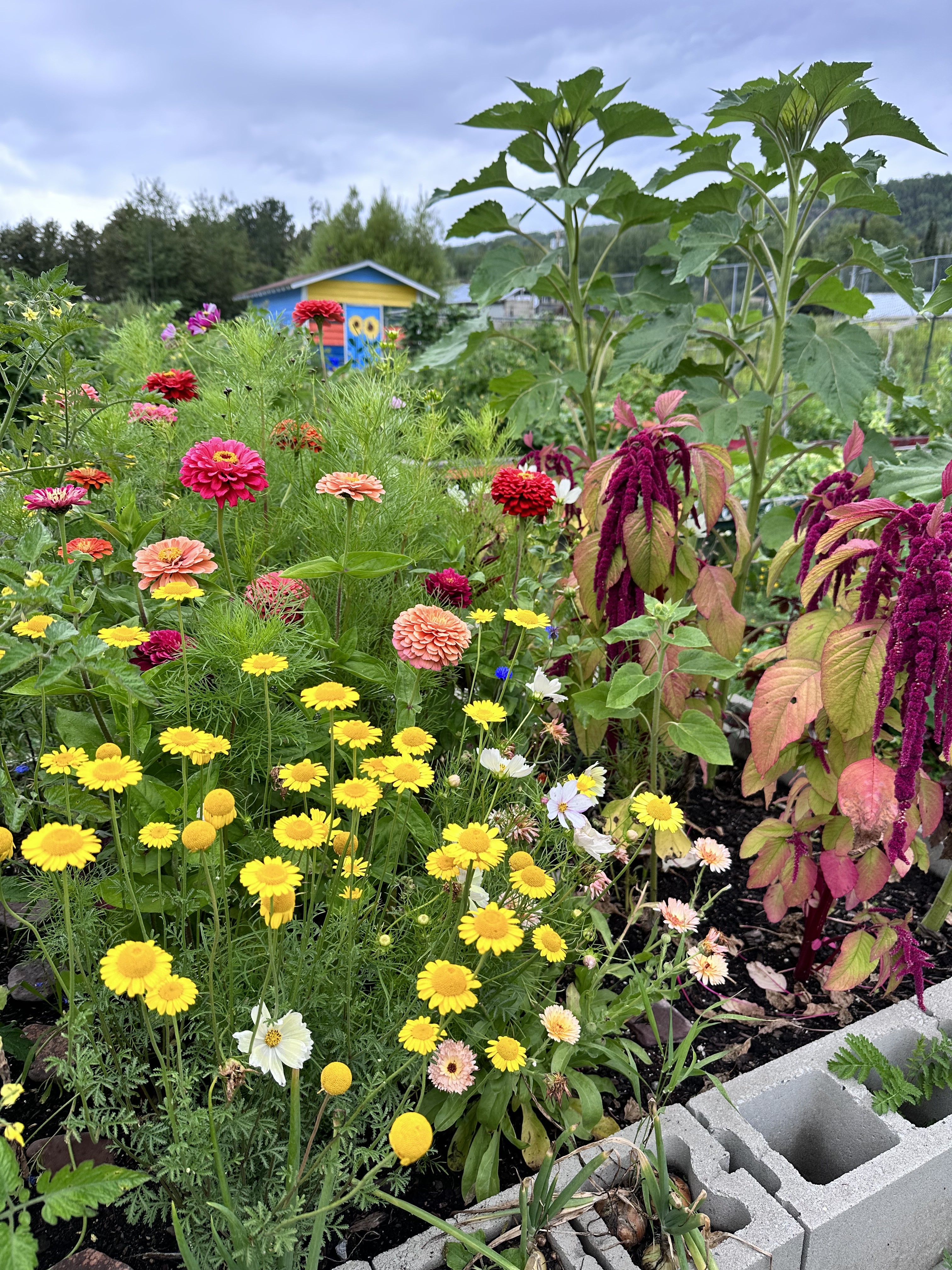
Liz’s community garden plot, summer 2023
One of the most obvious reasons for growing a dye garden is that it provides a steady source of color to work with throughout the seasons. Many dye plants are easy to grow, they add biodiversity to existing gardens, and they work well as companion plants to deter pests and improve the well-being of neighboring plants. Natural dyes also have a few advantages over chemical dyes in that they are biodegradable, renewable, and non-toxic, making them generally safer to use overall in addition to a lower environmental impact.
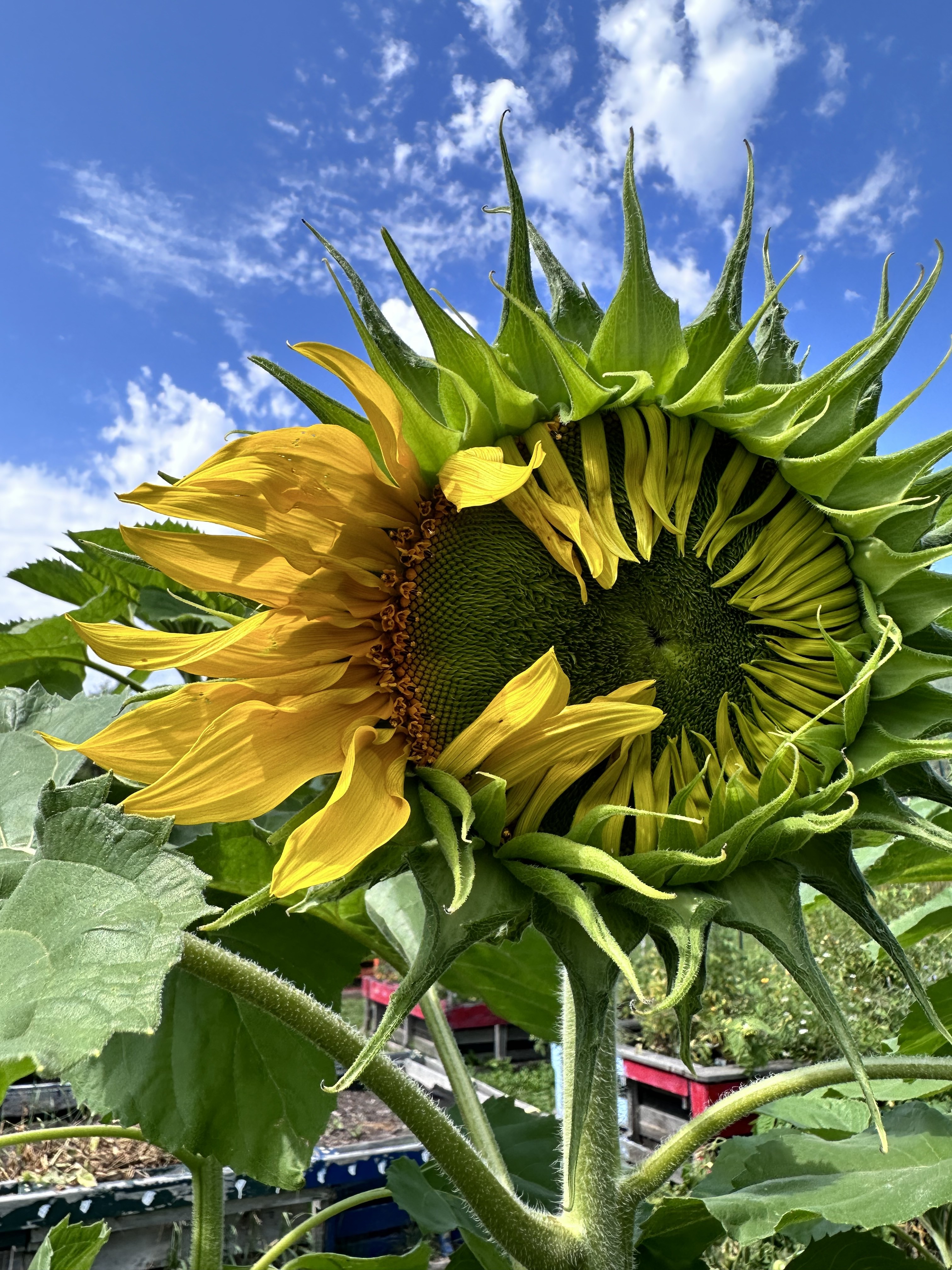
Hopi Black Sunflower
Before I can tell you why I wanted to plant my own dye flowers (which was for all of the aforementioned reasons), I have to answer the question of why I am drawn to natural dyes in the first place. One large part of this answer is because of the inherent slowness of the whole process that is natural dyeing.

Hopi Black Sunflower seeds
Another large part is because I’m drawn to the vibrancy of natural dyes compared to the relatively flat quality of synthetic dyes. The range of yellows found in a Crayola crayon box is minimal compared to what can be found in the natural world. I learned later that this particular quality of natural dyes is because plants and insects have several chromophores (aka color molecules) that make up the colors we see, giving them a unique luminous quality, whereas synthetic dyes contain only one or two color molecules in comparison.
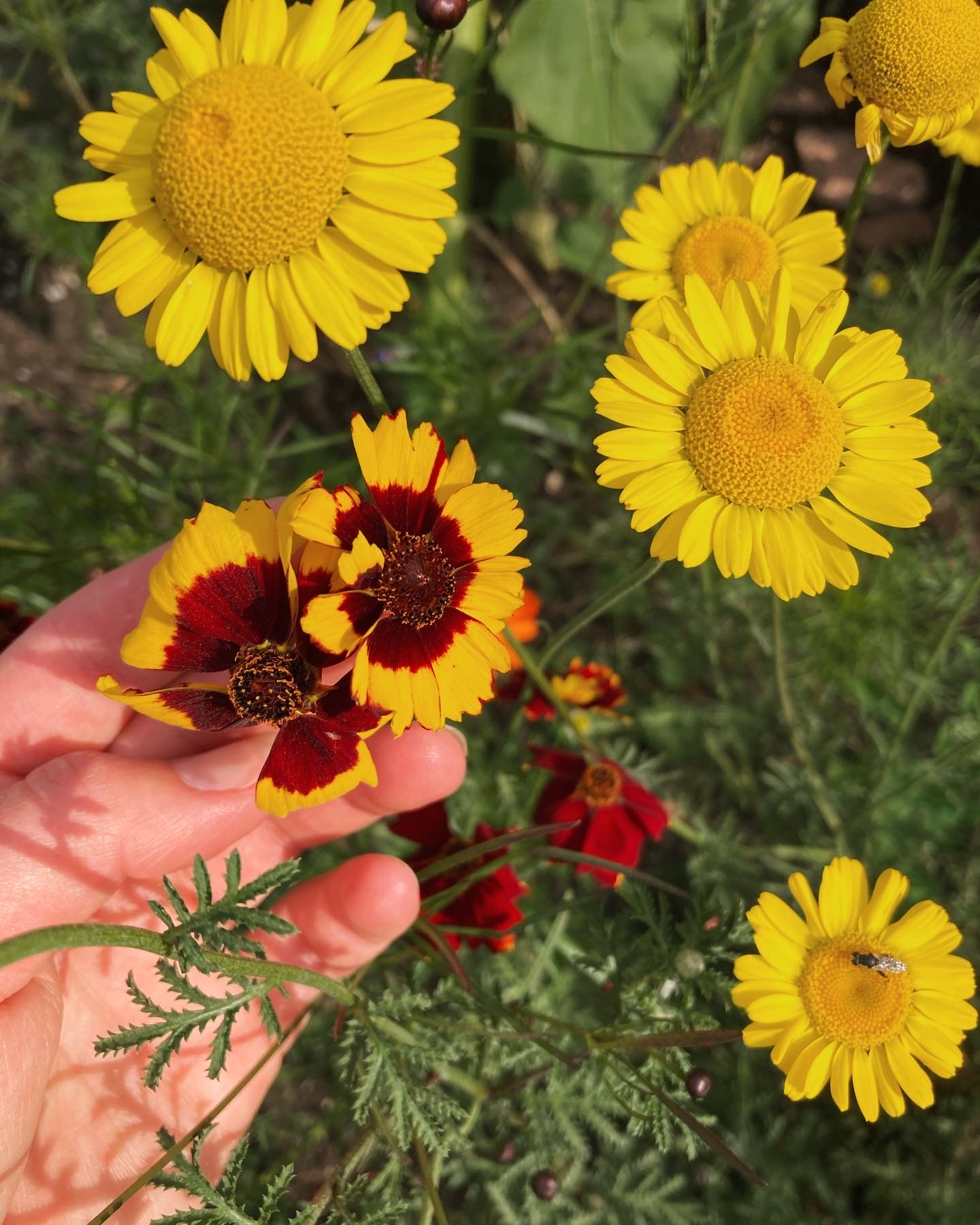
Dyer’s Coreopsis and Dyer’s Chamomile from Liz’s garden plot
So, when I first set out to plant my own color, it was largely out of a desire to keep learning and experimenting with color, in addition to furthering my connection with the process as a whole. I had already been spending countless hours foraging in the woods and using the extracts of plants and flowers that were commonly grown in gardens, so growing my color seemed a natural next step to take. I was also working towards a shift in my dye practice to mainly use dyes that I’d either foraged or grown myself. A few years ago, I finally purchased my first dye plant-specific seed packets—Dyer’s chamomile and Hopi Black Sunflowers—and I’ve been planting and nurturing these and many others since. Some other dye flowers I’ve since added to the mix (and ones that are easy to cultivate) include marigolds, cosmos, and dyer’s coreopsis.
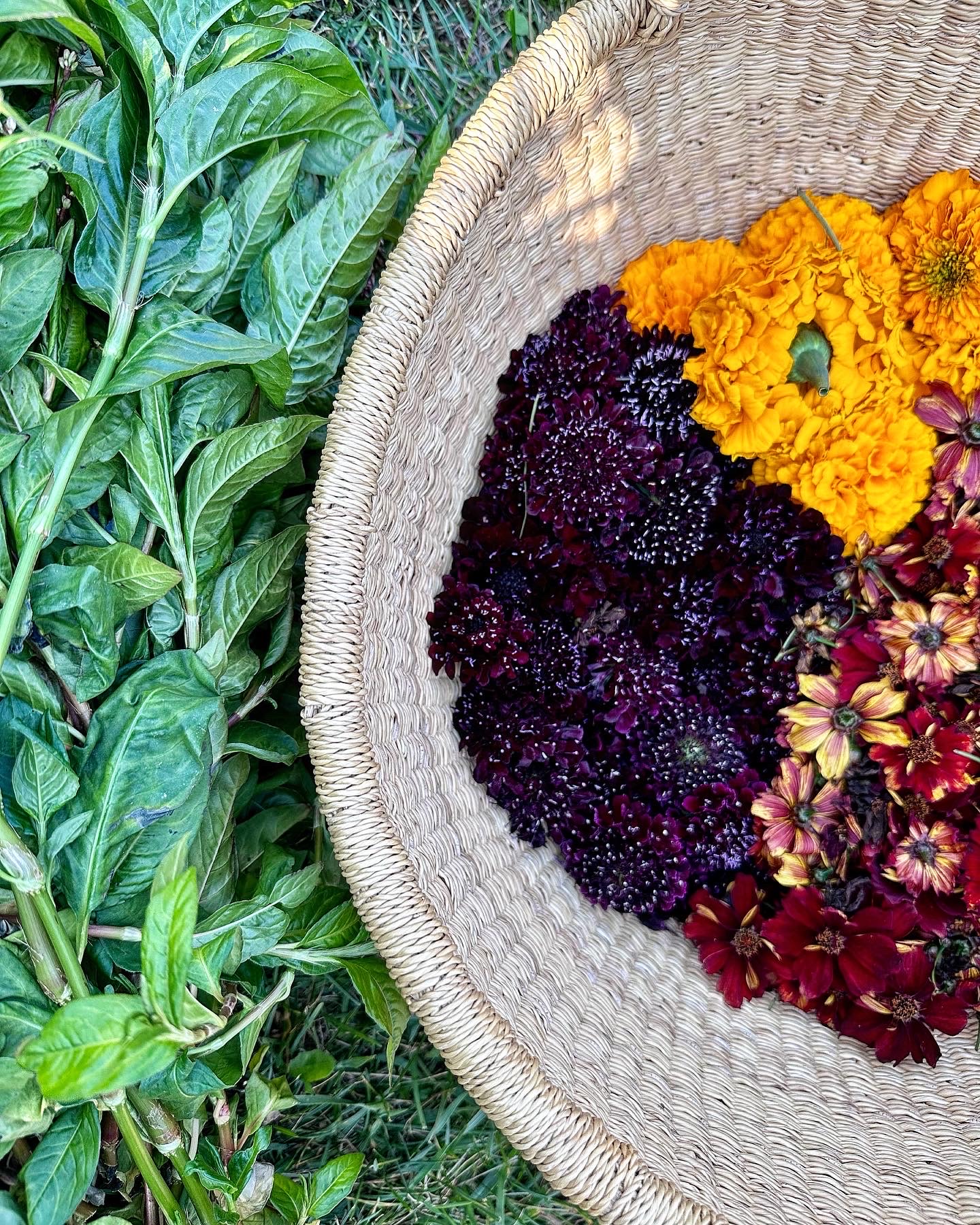
Basket of harvested scabiosa, marigolds, indigo and coreopsis
Now, during these later winter months when the ground is (typically) bathed in white, I often find myself beginning to feel starved of the abundance of color in our short and sweet summer. And even though the days are getting longer, it is still much too early to begin starting seeds. Instead, I look toward warmer days and settle in for daydreaming and sketching out ideas for what I hope to grow in my community garden plot in anticipation of the coming growing season.
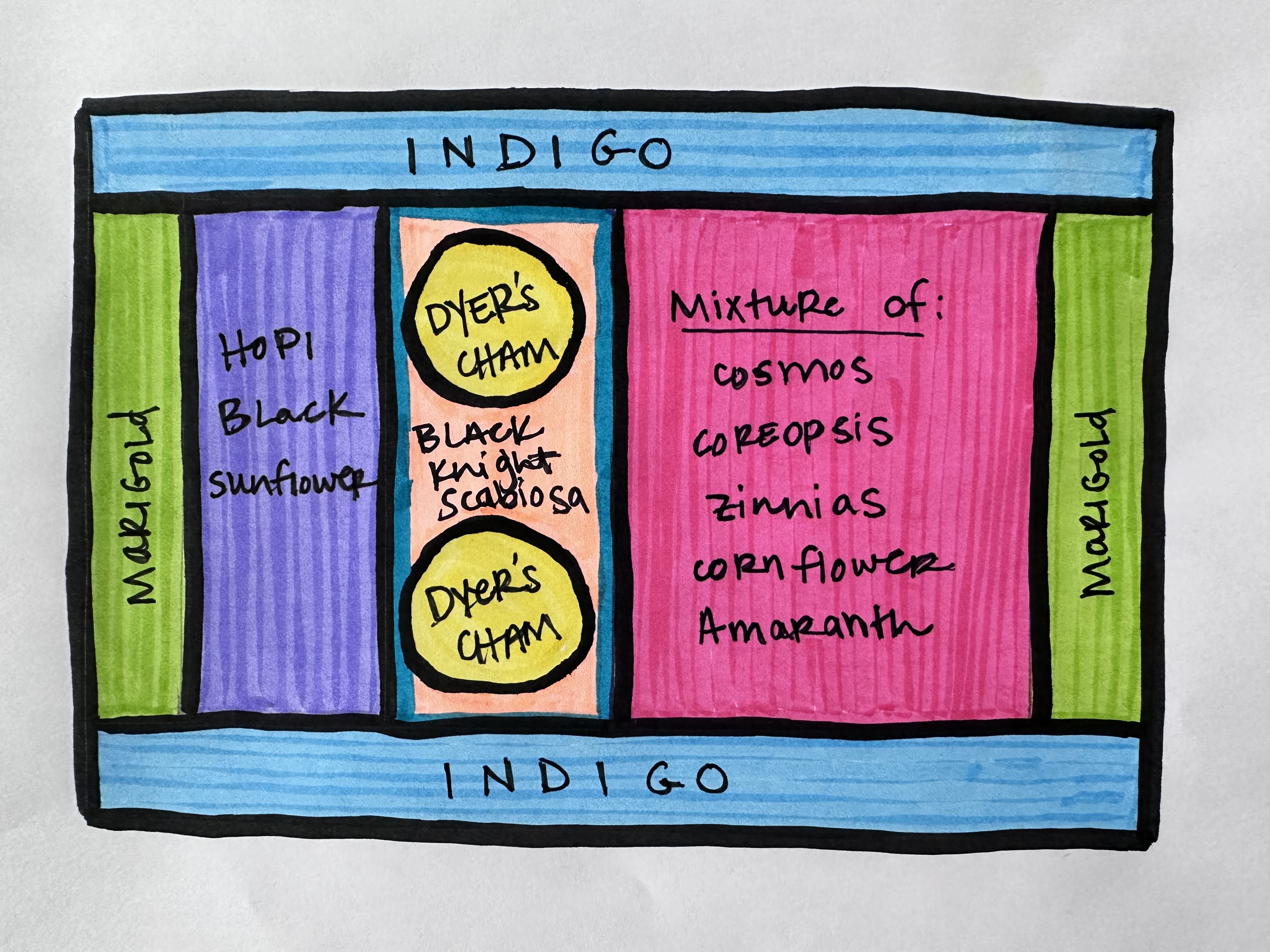
Plans for 2024’s community garden plot
If you have an interest in starting your own dye garden, the following are a few I’ve purchased seeds from as well as other sources for seeds:
North House offers natural dye classes throughout the year, including classes with Liz in the summer of 2024. Find all Fiber Arts courses, including natural dye courses, here.